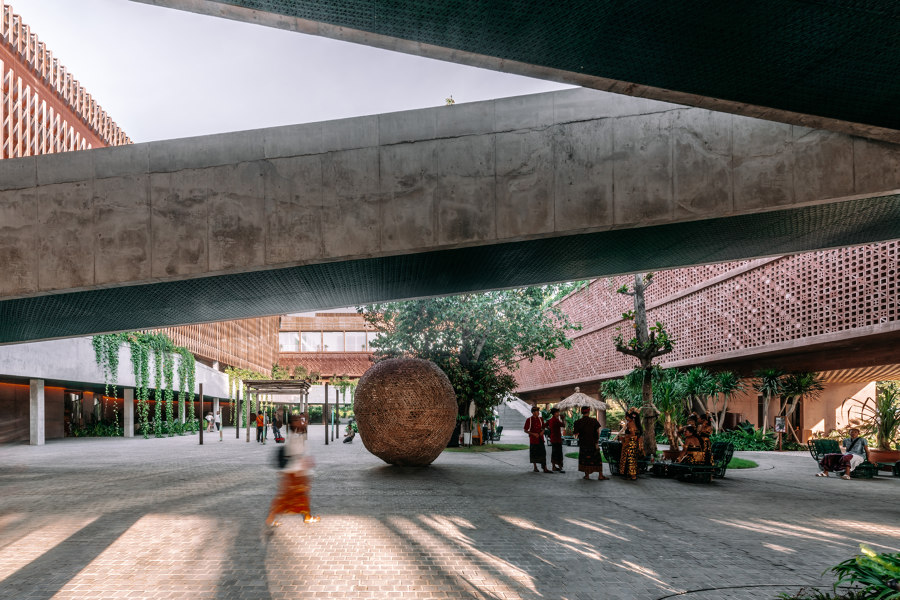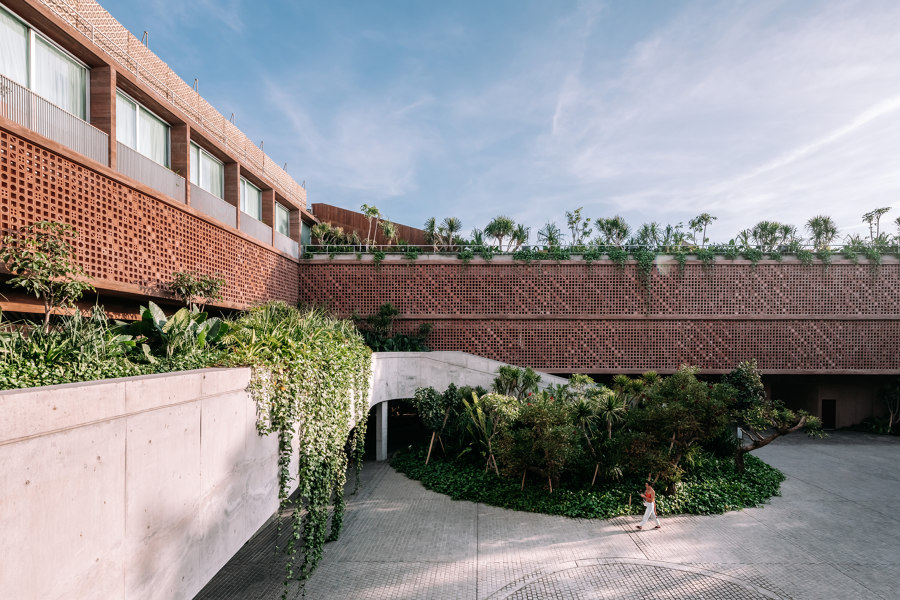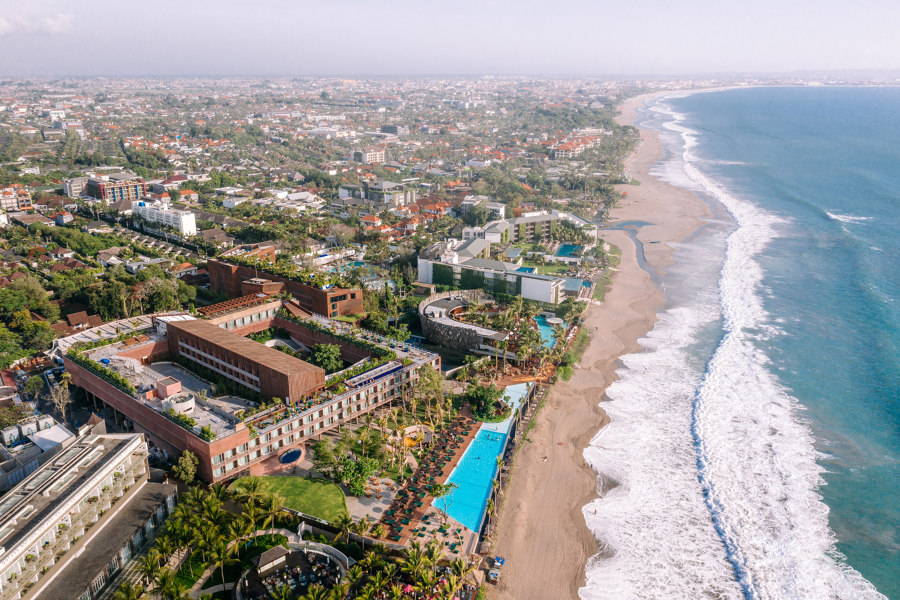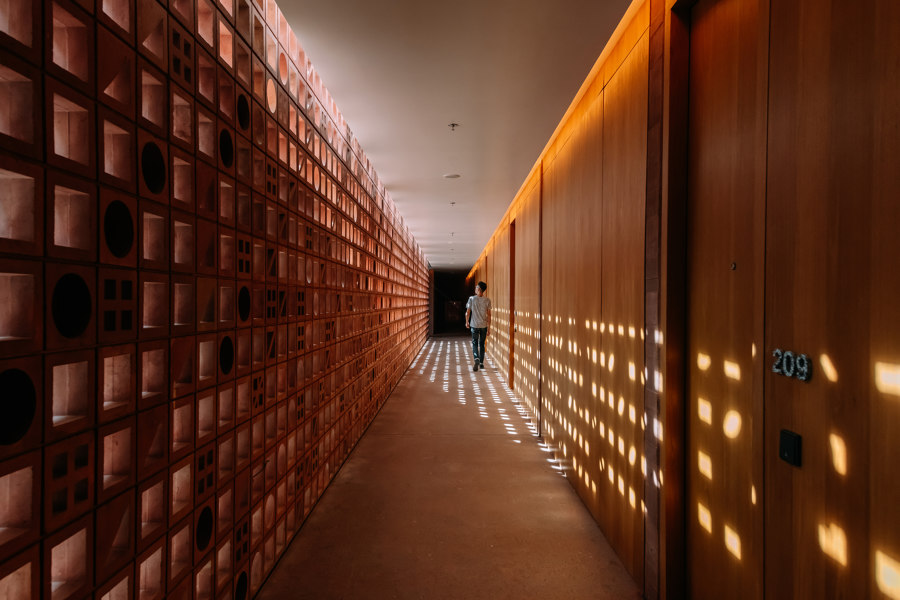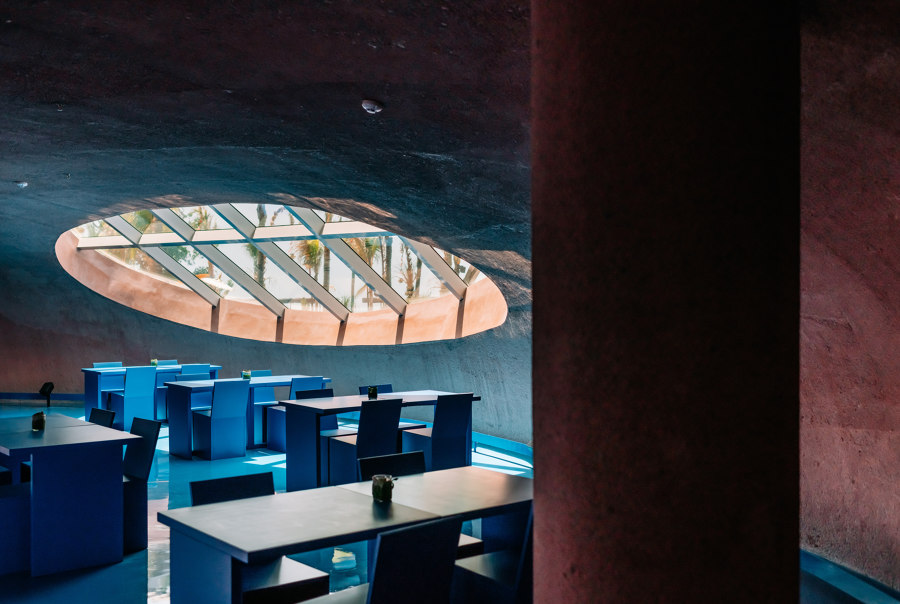While the essence of Bali lies in interaction between different cultures, the ubiquitous resort typology currently in Bali and other tropical destinations paradoxically emphasises hotel guests’ exclusive enjoyment, detached from the life of the local community. Located on one of the last remaining unoccupied beach front sites in Seminyak, the Potato Head Studios challenges the typical resort typology: the notion of “exclusivity” is abandoned; the resort is reconsidered as a part of the local community.
One of the three buildings of Desa Potato Head—a village (desa being the Indonesian translation of village) that includes a beach club and two hotels—the Potato Head Studios is a resort open to the public: it offers private guestrooms and facilities, and public spaces. A floating ring lifted by pilotis accommodates the guestrooms and other functions, including an exhibition space and a large sunset bar. This configuration has resulted in a cultural ground plane, or an open platform, which leads to the beach. The open platform is the centerpiece of the resort—a flexible stage for a range of programs such as festival celebrations, cultural events, and day-to-day leisure activities that welcomes everyone to experience Balinese culture.
The roof top—conceived as a public space and a sculptural park—is accessible through a public route that winds up the floating complex, which connects amenity spaces including restaurants, pools, and spas.
The Potato Head Studios was designed with the Indonesian context in mind. The open platform at the ground level and a private garden on the second floor evoke both the raised courtyards in Indonesia, and traditional Balinese courtyards found at the ground level.
The Potato Head Studios is a resort for open engagement rather than private consumption. It is a new space for the community where visitors of all kinds—hotel guests and the general public—experience contemporary Balinese culture, while making it.
Design Team:
OMA
Partner-in-Charge: David Gianotten
Project Architect : Ken Fung
Associate-in-charge (until 2015): Michael Kokora
Senior Architect (until 2017): Fred Awty
Team: Diana Ang, Thorben Bazlen, Von Xiao Chua, Kwan Ho Li, Mike Lim, Ioana Mititelu, Catherine Ng, Slobodan Radoman, Rizki Supratman, Shinji Takagi, Patrizia Zomberning
Collaborators:
Local Architect: Andramatin
Civil, Geotechnical, Structural Building Services: Aurecon
Landscape Consultant: Larch Studio
Lighting Consultant: Switch
Acoustic Consultant: DHV


